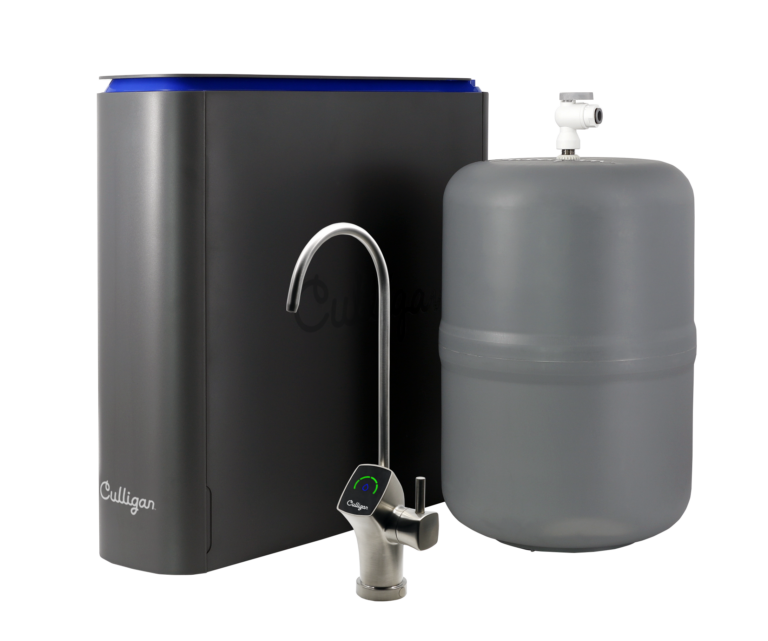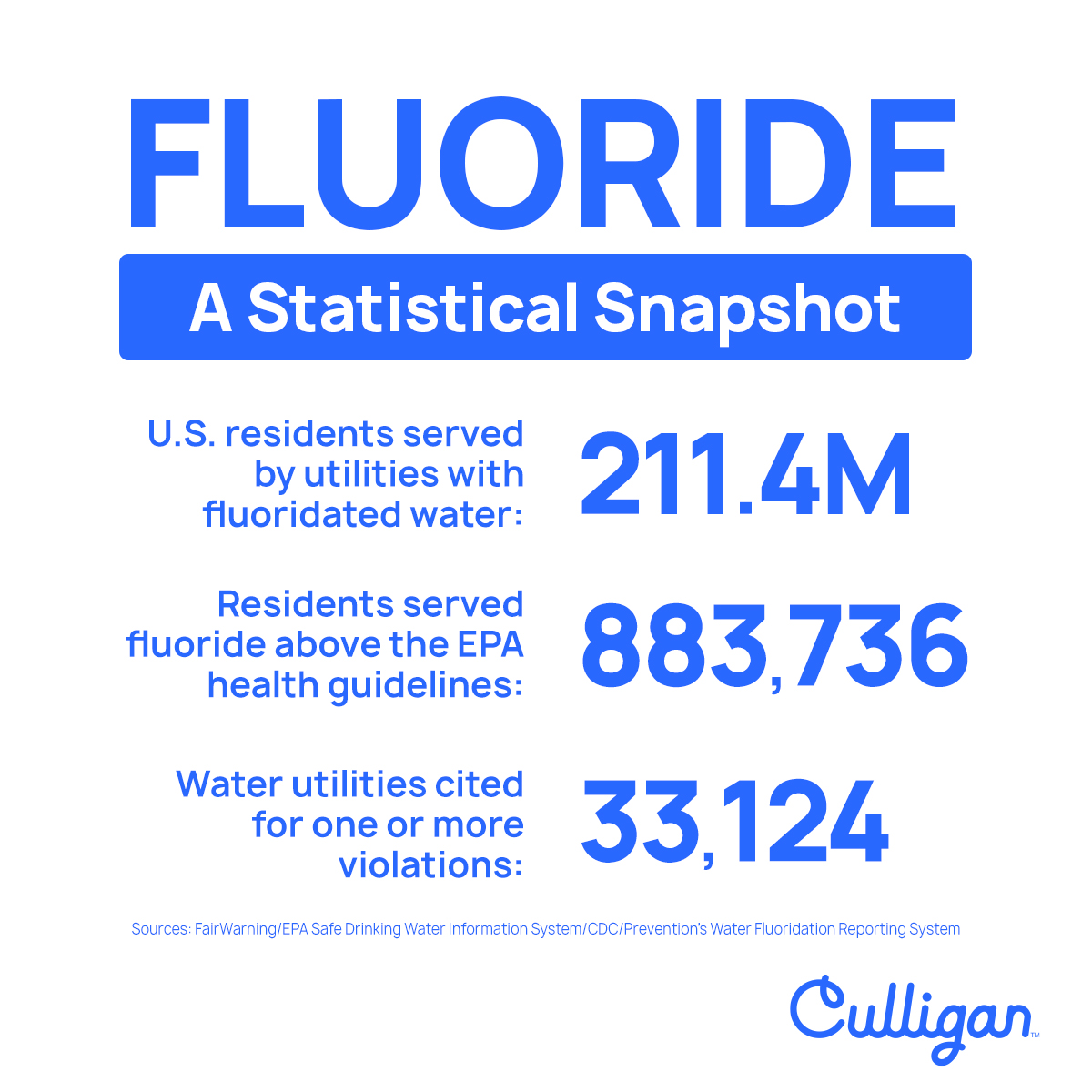How Much Fluoride Is in Your Water and How to Remove It
How Much Fluoride Is in Tampa’s Tap Water Supply?
According to the City of Tampa’s 2023 Water Quality Report, the fluoride level detected in Tampa’s tap water is approximately 0.57 parts per million (ppm). This level falls within the recommended range for promoting dental health without causing adverse effects. However, individual sensitivity to fluoride and cumulative exposure from various sources should be considered when evaluating the safety of your tap water. Testing your specific water supply can provide more accurate results tailored to your home’s water quality.
Fluoride is a mineral that naturally occurs in water sources and is sometimes added to municipal water supplies to support dental health. In Tampa Bay, the amount of fluoride in your water can vary depending on the source, such as the Hillsborough River or various community water systems like the Tampa Water Department and Pinellas County Utilities. Natural groundwater may contain higher levels of fluoride, while treated water typically maintains fluoride levels intended to promote dental benefits.
The Environmental Protection Agency (EPA) sets the maximum contaminant level for fluoride at 4.0 milligrams per liter (mg/L), with an optimal level of 0.7 mg/L recommended to prevent dental fluorosis. Testing your tap water is the only way to know for sure how much fluoride is present. Municipal sources like the Altamonte Springs Water Department, Collier County Regional Water Treatment Plant, and Fort Myers Water Treatment Plant may adjust fluoride levels to meet public health guidelines.
Why Should You Be Concerned About Fluoride Levels in Your Water?
While small amounts of fluoride in drinking water are considered safe and even beneficial for dental health, excessive fluoride exposure can cause problems. Dental fluorosis, a condition characterized by discoloration and damage to tooth enamel, is one of the most common issues. Chronic exposure to high levels of fluoride can also affect bones and joints, contributing to skeletal fluorosis.
Special populations such as infants, children, pregnant women, and individuals with certain health conditions may be more vulnerable to the adverse effects of fluoride. Research has suggested that elevated levels of fluoride exposure may have potential neuropsychiatric risks and may affect IQs in children. If you are concerned about your fluoride intake, it’s essential to test your water and take action if needed.
How to Test for Fluoride in Your Tap Water
To determine how much fluoride is in your water, a professional water test is necessary. Culligan of Tampa offers comprehensive water testing services to accurately measure fluoride levels and identify other potential contaminants, such as radiological contaminants and organic compounds. After testing, we will provide a detailed report with clear recommendations for your home.
How to Remove Fluoride from Your Water
If high levels of fluoride are detected in your water, Culligan of Tampa has the perfect solution.
Our advanced Reverse Osmosis (RO) systems are highly effective at reducing fluoride, along with other harmful contaminants. Here’s why Reverse Osmosis is the best choice:
- Highly Effective: RO systems can remove up to 95% of fluoride from your drinking water, including fluoride ions found in tap water.
- Convenient: Enjoy clean, great-tasting water straight from your tap.
- Tailored Solutions: Our systems are customized to meet your home’s specific needs.
- Expert Installation & Maintenance: Our technicians handle everything from setup to ongoing care.
Why Choose Culligan of Tampa for Fluoride Removal?
With years of experience serving the Tampa Bay area, Culligan of Tampa offers unparalleled expertise in water treatment. Our knowledgeable team can help you identify fluoride levels in your water from sources like the Bay County Water System, Inverness Water Department, and Manatee County Utilities Department.
Solutions
Suggested Products

AC-30® Drinking Water System – 4 Stage Filtration
- Reduces Chromium-6.
- Saves money compared to using single-serve bottles from the store.
- Go green by eliminating wasteful plastic bottles.
- Improve the taste of coffee, tea, powdered drinks, soups, recipes and baby formula.
- Free up valuable refrigerator space by eliminating pitchers and bottled water
- Meets strict standards of NSF International and WQA.
- Third-party certified to perform as promised and are backed by one of the most comprehensive warranties in the industry.
- The Culligan® AC-30 Good Water Machine® is maintenance-free. Your local Culligan Man handles everything, and it comes with an elegant designer faucet in a variety of styles to match any kitchen.
Benefits of Reducing Fluoride in Your Water
By removing excess fluoride from your water, you can:
Preventing Dental Fluorosis and Promoting Oral Health
One of the primary concerns associated with excessive fluoride consumption is dental fluorosis, which manifests as white spots, discoloration, or even pitting of the enamel on teeth. While moderate fluoride intake can aid in the prevention of cavities by strengthening tooth enamel, excessive exposure—especially during childhood when teeth are still developing—can lead to these unsightly and potential long-term cosmetic issues.
Promoting oral health requires a balanced approach to fluoride use. Ensuring that children consume the right amount of fluoride, primarily through dental products such as toothpaste and professionally administered treatments, is crucial. However, ingesting high levels of fluoride from drinking water, particularly where fluoride is artificially added, can tip the scales from beneficial to harmful. By using water filtration systems to reduce fluoride levels in tap water, families can take proactive measures to safeguard their children’s oral health, ensuring that they reap the benefits without facing the risks associated with overexposure.
Protecting Bone Health from Long-Term Overexposure
Long-term consumption of elevated fluoride levels can potentially affect bone health, leading to conditions such as skeletal fluorosis. This condition is characterized by a gradual accumulation of fluoride in the bones, which can result in stiffness, pain, and in extreme cases, changes to bone structure. While some fluoride is necessary for maintaining healthy bones, excessive amounts can disrupt the delicate balance required for optimal bone integrity.
Cutting down on fluoride intake through effective water filtration can mitigate these risks, especially for sensitive populations including pregnant women and young children whose bones are still developing. Protecting bone health is essential, as strong bones are crucial for mobility and overall health throughout life. With modern filtration methods, like Reverse Osmosis (RO), residents in Tampa can ensure that their water is not only free from harmful contaminants but also safe from elevated fluoride levels, promoting long-term skeletal health and wellness.
Water News: Fluoride in Florida’s Water Supply
Fluoride in Tampa’s Tap Water: Local Impacts
In Florida, several counties, including Hillsborough County, Pinellas County, and Manatee County, have been involved in discussions about fluoride in their public water systems. Local government leaders, such as Commissioners Wostal and Ken Hagan, have expressed differing opinions on the matter.
The potential removal of fluoride from drinking water could have various implications for community health and dental health, particularly for children. While some argue that removing fluoride would protect against potential risks, others believe it would undermine one of the most significant public health achievements in combating tooth decay.
History of Fluoride in Tampa Tap Water
The introduction of fluoride into water supplies dates to 1945 in Grand Rapids, Michigan, marking the inception of a practice known as fluoridation. This process involves adding fluoride to municipal water supplies, with concentrations ranging between 0.7 and 1.2 parts per million (ppm), a range considered both safe and effective for dental health. Notably, the 0.7 ppm concentration is widely acknowledged as the safest level, providing the optimal range for preventing tooth decay. Tampa introduced fluoridation in 1988.

However, as of 2025, Florida legislature has placed a ban on the fluoridation of water sources throughout the state. You can learn more about about this in our latest blog, here.
Benefits of Fluoride in Tampa’s Tap Water
Tampa, like many cities across the nation, adheres to this range, with 0.7 ppm recognized as the safest and most effective level for preventing tooth decay. The city’s commitment to this optimal concentration reflects a meticulous balance between promoting dental health and addressing any potential concerns associated with higher fluoride levels.
Proven to protect teeth, fluoride counteracts acid produced by mouth bacteria from sugary foods. This acid weakens tooth enamel, increasing cavity risk. Fluoride rebuilds and strengthens enamel, preventing cavities and even restoring tooth surfaces.
Community water fluoridation adjusts water fluoride to recommended levels for decay prevention. While other fluoride products exist, water fluoridation is the most cost-effective, reducing tooth decay by 25% in all ages, according to the Centers for Disease Control and Prevention (CDC)
Benefits extend across ages: for children, fluoride strengthens developing adult teeth; for adults, it supports enamel, reducing cavities, severity, need for dental procedures, and associated pain and suffering.
FAQ’s About Fluoride
How do I know if my water has too much fluoride?
The best way to determine fluoride levels in your water is through a professional water test. While public water systems provide annual reports, fluoride levels can vary based on your specific location, plumbing, and water source. The EPA’s maximum contaminant level for fluoride is 4.0 mg/L, but levels above 0.7 mg/L could contribute to fluorosis with prolonged exposure. Culligan of Tampa offers comprehensive water testing to accurately measure fluoride levels in your home’s water supply.
Is fluoride in drinking water safe for infants?
Infants are more sensitive to fluoride because their developing teeth and bones absorb minerals differently than adults. The CDC and American Dental Association recommend using fluoride-free water for mixing infant formula if your water supply has added fluoride. Excess fluoride consumption during infancy can increase the risk of dental fluorosis, which appears as white spots or streaks on developing teeth. If you’re concerned, using a fluoride-free water source or an RO filtration system can help ensure safe drinking water for your baby.
Does boiling water remove fluoride?
No, boiling water does not remove fluoride. In fact, it can increase fluoride concentration because water evaporates, leaving the fluoride behind. Fluoride can be removed from water using reverse osmosis.
Can Brita filters remove fluoride?
No, Brita filters do not remove fluoride. Standard carbon-based filters, like Brita and PUR, are designed to improve taste and remove chlorine and some heavy metals, but they do not filter out fluoride ions. If you want to reduce fluoride in your drinking water, you’ll need a reverse osmosis system.
How does fluoride affect pets?
Like humans, pets can be affected by excessive fluoride exposure. Since dogs and cats drink tap water and may consume fluoride from processed pet food, high fluoride levels can impact their health over time. Potential effects include:
- Dental fluorosis (in young pets during tooth development)
- Bone issues (increased risk of fractures or joint problems in older pets)
- Neurological effects (from excessive long-term fluoride consumption)
Using filtered water for pets, especially if your tap water has high fluoride levels, can help reduce the risk of overexposure.
What are alternative sources of fluoride if I remove it from my water?
If you choose to remove fluoride from your drinking water, you can still get adequate fluoride for dental health through:
- Fluoridated toothpaste (recommended by dentists for cavity prevention)
- Fluoride treatments at the dentist (professional fluoride applications)
- Certain foods (seafood, tea, and some vegetables naturally contain fluoride)
Since fluoride is most effective when applied topically (via toothpaste or treatments), drinking fluoridated water is not the only way to protect your teeth. If you prefer fluoride-free water, maintaining good oral hygiene and getting regular dental checkups can help prevent cavities.

Facebook